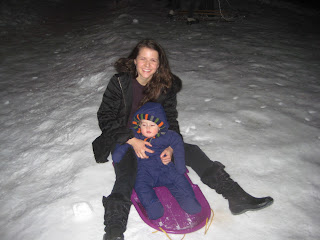A new exhibit at MoMA PS1 called "The Talent Show" explores the struggle that humans have increasingly faced over the past thirty years - a struggle between notoriety and privacy. How much exposure is acceptable, how much is and should be dictated by the subject, and where does one draw the line between art and gratuitous exhibitionism. A weighty subject, I'm sure we'd all agree. Interestingly enough, though, the exhibit, "The Talent Show" in Queens is sometimes a little light on the substance. The folks at the MoMA did an interesting job of combining the works of eighteen different artists to explore these subjects, and I definitely found a few pieces intriguing, if not touching and thought-provoking, but a few others were, basically, old news.
My buddy, Kimberly from Moxie Street, and I schlepped out to Queens on the 7 train a few days ago to see this new collection of works. Now, Kimberly is the perfect museum buddy - she knows when to chat about meaning and, most importantly, she knows when to shut face and take in the moment. I was happy to realize this when we stepped in to the first room of "The Talent Show" and took in an empty, dark room with a spotlight in the center. We circled the pool of light, stepped into it, pondered its existence, and Kimberly finally said, "It's like what you do every day". I chuckled. Yes, I am no stranger to the spotlight. We looked at each other and shrugged. Not so exciting. Or thought-provoking, for that matter. Hopefully, it would get better.
Another piece of note was a video montage entitled "The Intra-Venus tapes" by the late artist Hannah Wilke. When I saw the piece and realized what I was observing, I literally had to sit down (luckily, there was a bench directly in front provided by the friendly MoMA folks). First impression: 16 video screens simultaneously played seemingly unrelated home videos in a dark room. I stared for a bit and realized that a recurring character in these videos was a woman that seemed to be sick in some way. I read a bit about it and sat down. Hannah Wilke documented her battle with cancer over three years until it took her life in 1993. The 16 video screens were arranged in chronological order from her diagnosis through her death. The videos show her running and playing with her toddler daughter and, later, shuffling from bed to toilet, bald, in a hospital gown. Viewers watch her pull handfuls of hair out of her head on the lower screens while a smiling sunny family vacation simultaneously plays along the top. It's as if she piled all of her memories on top of each other (her husband facilitated the editing, etc. posthumously). I was touched, but I couldn't figure whether I wanted to watch or not - it felt much too private. I didn't want to know about it. I didn't need to see it. Or, did I? It was ugly . . . but somehow beautiful. On second thought, I wasn't too sure I should be part of this. Or, perhaps, everyone should. In my opinion, good art makes one think and feel at the same time. Having said that, Hannah Wilke had created something exceptional.
While I'd love to describe all of my favorites at the MoMA, I'm sure you all have better things to do with your time . . . like go see it yourself. I will say, though, that the combination of opinions and differing, often conflicting, artistic approaches to the subject of the exposure of humans is flooring. Our private moments and feelings are, for lack of a better word, private. Intimate. What happens when those private moments become public? Do they lose their intimacy or is the intimacy shared with the viewer? How many viewers does it take to make a moment no longer private? Or is privacy, like beauty, in the eye of the beholder? Um . . . yeah . . . I don't know. Obviously. Nobody does. Or, that is, everyone thinks they know, but every individual's answer is different. And that, I think, is what makes us humans interesting. And worth observation . . . to a point.















